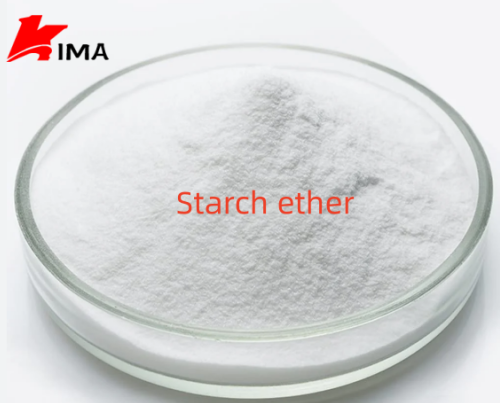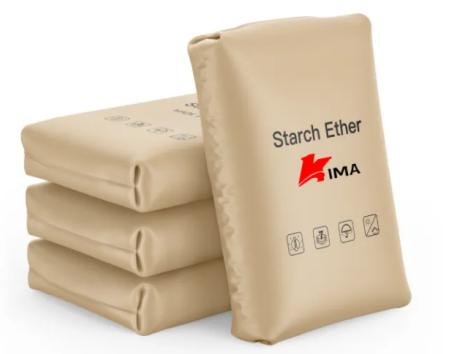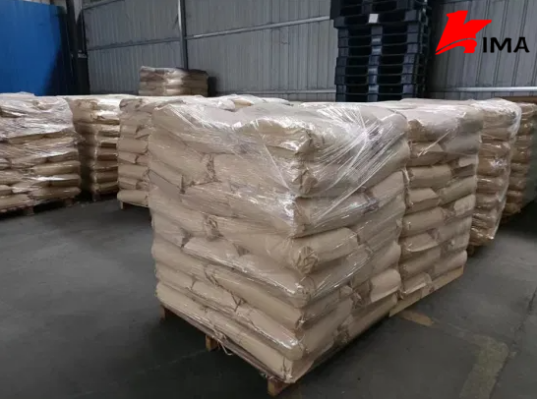Hydroxypropyl starch ether (HPS) is a derivative of starch, modified to improve its properties for various industrial applications. This etherification process enhances starch’s solubility, stability, and functionality, making it valuable in industries such as food, pharmaceuticals, textiles, and adhesives. The production of hydroxypropyl starch ether generally involves the etherification of starch with propylene oxide in the presence of an alkali catalyst.

1. Selection and Preparation of Starch
The production of hydroxypropyl starch ether starts with the selection of starch, which is typically derived from corn, potato, or tapioca. The quality and type of starch are essential to the final properties of the HPS. The starch is first cleaned and purified to remove any impurities or residues from the source material. In some cases, starch may be pre-treated to improve its reactivity, such as by hydrolyzing it to a smaller molecular size.
Preparation steps:
Cleaning: Removal of dirt, proteins, and lipids.
Drying: The starch is typically dried to the desired moisture content, usually around 10-12%.
Size reduction (optional): The starch may be ground into a finer powder to enhance the reaction efficiency.
2. Alkali Activation
The starch is then activated by the addition of an alkali, such as sodium hydroxide (NaOH) or potassium hydroxide (KOH). The alkali breaks the hydrogen bonds between the starch molecules, making the hydroxyl groups on the starch more reactive. The process also causes the starch granules to swell, allowing better penetration of the etherifying agent (propylene oxide).
Activation conditions:
3. Etherification with Propylene Oxide
After activation, the starch is reacted with propylene oxide (C₃H₆O) under controlled conditions to form hydroxypropyl starch ether. Propylene oxide is an epoxide compound that reacts with the hydroxyl groups on the starch molecules, resulting in the introduction of hydroxypropyl groups (-CH₂CHOHCH₃). This process is typically carried out in a liquid medium (usually water or an alcohol) to dissolve both the starch and the propylene oxide.
Etherification reaction: Starch-OH+CH2CH(CH3)O⟶Starch-O-CH2CH(CH3)OH\text{Starch-OH} + \text{CH}_2\text{CH(CH}_3\text{)O} \longrightarrow \text{Starch-O-CH}_2\text{CH(CH}_3\text{)OH}Starch-OH+CH2CH(CH3)O⟶Starch-O-CH2CH(CH3)OH
Reaction conditions:
Propylene oxide concentration: 1-2 times the weight of the starch.
Temperature: 50-70°C to ensure effective reaction without degradation.
Time: Reaction typically lasts 1-4 hours, depending on the desired degree of substitution (DS).
pH: Maintain a slightly alkaline pH (around 8-10) to prevent excessive hydrolysis of starch.
4. Neutralization and Separation
After the etherification reaction is complete, the mixture is neutralized by adding an acid, such as acetic acid or hydrochloric acid. This step removes the excess alkali and stops the reaction. Once neutralized, the product is separated from the reaction mixture, often through filtration or centrifugation.
Separation process:
Neutralization: Using a weak acid to neutralize the alkali.
Filtration: To remove any unreacted propylene oxide and by-products.
Washing: The product is washed several times to remove impurities and residual chemicals.
5. Drying and Pulverization
After neutralization and washing, the hydroxypropyl starch ether is dried. The drying process is typically carried out in a vacuum dryer or a spray dryer, depending on the desired final product form (e.g., powder or granular). The product is then pulverized into a fine powder to increase its surface area, which is essential for applications that require easy dissolution in water.
Drying conditions:

6. Characterization and Quality Control
The final hydroxypropyl starch ether product undergoes several tests to ensure it meets the required specifications. The key characteristics tested include:
Degree of Substitution (DS): The average number of hydroxypropyl groups attached to each starch molecule.
Viscosity: A measure of how thick the solution becomes when the starch ether is dissolved in water.
Solubility: The solubility in cold and hot water is tested, as HPSE is typically soluble in both.
pH: To ensure neutrality after the reaction.
Summary Table: Production of Hydroxypropyl Starch Ether
Step | Description | Conditions/Parameters |
1. Selection and Preparation | Cleaning, drying, and optional size reduction of starch. | Starch type: Corn, potato, tapioca. Moisture content: 10-12%. |
2. Alkali Activation | Starch activation by alkali (NaOH/KOH) to increase reactivity. | Alkali concentration: 1-10%. Temperature: 25-50°C. |
3. Etherification | Reaction with propylene oxide to form hydroxypropyl starch ether. | Propylene oxide: 1-2 times starch weight. Temp: 50-70°C. Time: 1-4 hrs. |
4. Neutralization & Separation | Neutralization of excess alkali and separation of product. | Acid: Acetic acid/HCl. Filtration: To remove by-products. |
5. Drying & Pulverization | Drying and pulverizing the hydroxypropyl starch ether to powder. | Drying temp: 50-60°C. Pulverizing: To fine powder. |
6. Quality Control | Testing for degree of substitution (DS), viscosity, and solubility. | DS: Varies. Viscosity: Measured in water. Solubility: Cold and hot water. |

Applications of Hydroxypropyl Starch Ether
Hydroxypropyl starch ether is widely used in various industries:
Food Industry: As a thickening agent, stabilizer, and emulsifier in products like sauces, soups, and dressings.
Pharmaceuticals: Used as a binder and disintegrant in tablet formulations.
Textiles: As a sizing agent in the fabric industry to improve the quality of finished textiles.
Adesives: In paper and packaging applications due to its adhesive properties.
The production of hydroxypropyl starch ether involves several key steps: starch activation, etherification with propylene oxide, neutralization, and drying. The final product's properties are influenced by the process parameters, such as the concentration of reactants, temperature, and reaction time. Proper quality control ensures that the hydroxypropyl starch ether meets the specifications required for its diverse applications.
 English
English 日本語
日本語 français
français Deutsch
Deutsch Español
Español italiano
italiano русский
русский português
português العربية
العربية Türkçe
Türkçe Nederland
Nederland






